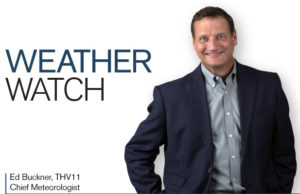Inauguration Day Weather Extremes

You may have heard that “Every Day is a Weather Day,” but when it comes to the U.S. Presidential Inauguration, the weather can be a news-making, historical event!
In the early days of our nation, the swearing-in of a new Commander-In-Chief happened in the spring. George Washington’s inauguration was on April 30, 1789, at Federal Hall in New York City. The weather that day was reported as “clear and calm.” Thomas Jefferson, our 3rd President, was the first to be inaugurated in Washington D.C. where the weather was described as “mild and beautiful” with a noon temperature of 55 degrees.
In the 1930’s, change came again to Inauguration Day when the ceremony was moved from March 4 to January 20 because of the weather. (Yes, it’s all about weather!) The idea to have the ceremony in late winter was an attempt to limit the effects of extreme weather on one of America’s most special days. March in the D.C. area brings the snowiest and rainiest weather of winter; however, January is much colder. Although weather was the main factor in the decision to move this important date, another cause was that Congress found that the four-month wait from election to power was too long. The Twentieth Amendment was ratified on January 23, 1933, moving the date up 6 weeks.
Franklin D. Roosevelt was the first president inaugurated in January. The 38th presidential inauguration occurred on January 20, 1937, which ironically was a total wash-out. With 1.77 inches of rain, this date holds the record for being the rainiest in the history of the United States. So much for trying to plan around the weather!
Extreme weather and Inauguration Day have had many notable dates. “The worst weather on the face of the Earth,” said one congressman about the deep snow, freezing temperatures and gusting winds that almost buried the inauguration of William Howard Taft in 1909. In 1841, miserably cold, wet conditions contributed to the death of our 9th President, William Henry Harrison, who refused to wear a hat and coat while standing outside during his 1 hour and 40-minute address. He caught pneumonia and died a month later. Two days of rain preceded the second inauguration of Abraham Lincoln, then just as the ceremony was about to begin, the rain stopped and the sun broke through the clouds.
Average temperature in Washington D.C. at noon when the oath is given is 37 degrees, but it’s interesting to take a look at the history of Inauguration Day weather extremes as we welcome our 45th president to office. According to this data, President Ronald Reagan is the big winner with the two greatest extremes.
WARMEST
1981 – President Reagan’s first inauguration was a mild 55 degrees.
COLDEST
1985 – With wind chills as low as 20 degrees below zero, President Reagan’s second inauguration was moved indoors.
RAINIEST
1937 – 1.77 inches of rain soaked President Franklin D. Roosevelt’s big day.
SNOWIEST
1961 – Eight inches of snow fell the night before President John F. Kennedy was sworn in.
Regardless of the weather on January 20, 2017, I’m praying and hopeful for a peaceful and calm year on all fronts, weather included.








0 comments